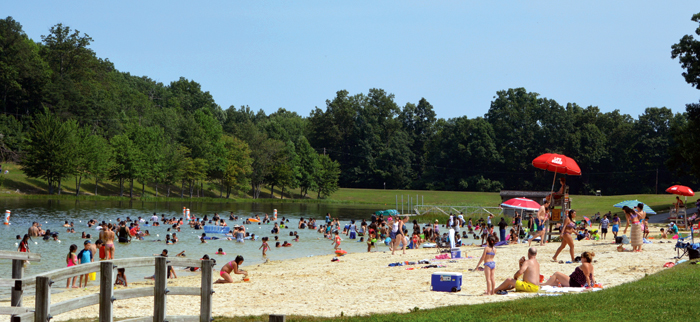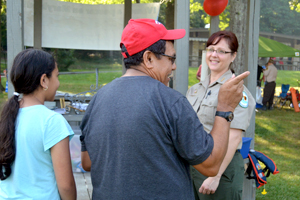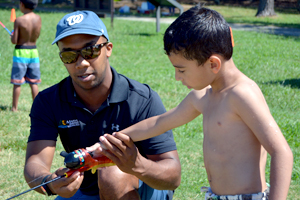Es Mi Parque: This is my park

Greenbrier; staff photo
In the United States, we are fortunate to have access to vast public lands, from local parks and state-managed assets to national monuments and other cultural sites for the enjoyment of residents and visitors alike. The Great Smoky Mountains, the Grand Canyon, Yellowstone. These household names instantly call to mind dramatic, inspiring and somehow familiar scenes to many of us, even if we have never been there personally. In fact, did you know that over the past decade, many guests visiting these iconic American sites were from abroad?
This presents a unique challenge: communicating with and serving various culturally diverse populations. Maryland State Park visitation is robust in itself, seeing more than 12 million guests annually. Of our vast network of 72 parks, a few in particular—Cunningham Falls, Greenbrier, Patapsco Valley, Point Lookout, Rocky Gap and Sandy Point—greatly appeal to the Hispanic community for their family-friendly environments, access to water and large day-use facilities. More than two-thirds of summer visitors to these six parks are of Hispanic descent.

Welcoming gusts to Greenbrier; by Candy Thomson
As with other publicly managed areas, a language barrier exists between these customers and staff. This is especially true during peak visitation season.
Building a connection
Last year, we at the Maryland Department of Natural Resources launched a pilot project to improve customer service and reduce that barrier. Our objective was simple, as was the strategy. We needed to better connect with a major population. How? Through environmental education programming and outreach activities.
We learned reaching children helped bridge a gap in communicating with parents. Knowing the draw of water-access parks, we especially wanted to emphasize fishing opportunities for kids as well as the need for licenses and proper safety gear.
Through partnerships with other state agencies, friends groups, bilingual volunteers and outdoor industry partners, we connected with families through fish identification games, interactions with Splash the Water Safety Dog and hands-on fishing demonstrations and lessons.
“Although I myself cannot speak Spanish,” says Greenbrier Manager Mary Ironside, “visitors approached me to ask about basic park rules and recreational opportunities. The event, in itself, made park personnel more approachable and friendly.”

Teaching a youngster how to fish at Patapsco; by Candy Thomson
Learning from each other
Throughout the pilot process, we interacted with more than 700 Hispanic visitors and learned that, for a variety of reasons, many were unfamiliar with state natural resource laws and regulations.
“For many of us, it was the first time we had gotten a chance to swap ideas and talk about how best to reach our goal,” says Natural Resources Police spokeswoman Candy Thomson. “As a result, I brought back and shared lots of ideas to strengthen our bond with the Hispanic community.”
Department efforts have since included making fishing regulations and our boater safety course available in Spanish. We also focused on showcasing some of our other parks and their amenities. Visitor feedback has helped us plan more effectively for high visitation days and gauge our needs for future amenities.
Ongoing efforts
This year, we are proud to continue this education and outreach initiative.
We are working closely with the Governor’s Office on Community Initiatives and its Commission on Hispanic Affairs to host events throughout the summer, as well as the Recreational Boating and Fishing Foundation, which awarded the department a grant specifically for this program.

Sharing laughs at Point Lookout; by Candy Thomson
This summer, we plan to build upon the success of last year, interacting with even more visitors and foster our view of young park goers as the next generation of anglers, conservationists, hunters and outdoor recreation enthusiasts.
It is of utmost importance that all visitors feel a sense of ownership of our public spaces, which we believe will encourage greater respect for our natural resources.
We hope to see you in the parks!
Article by Kevin Chesley—land resources policy analyst.
Appears in Vol. 20, No. 3 of the Maryland Natural Resource magazine, summer 2017.


 1-888-373-7888
1-888-373-7888 233733
233733